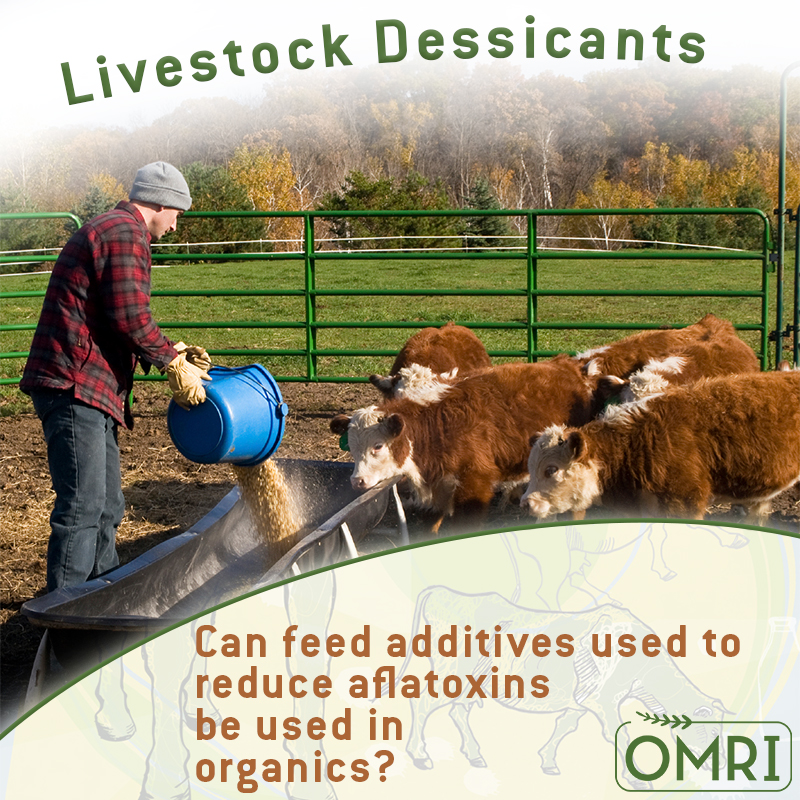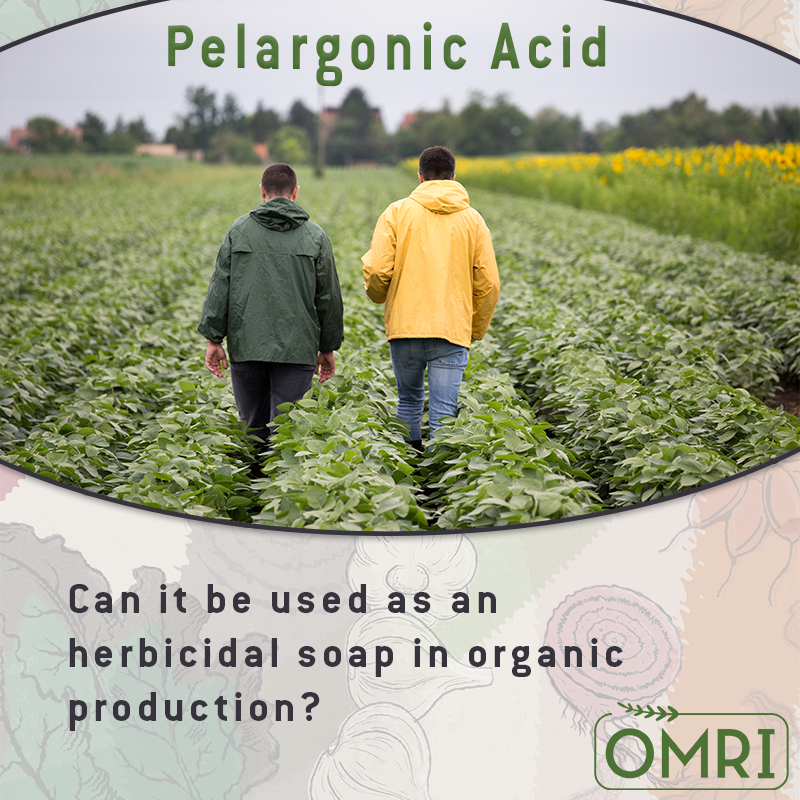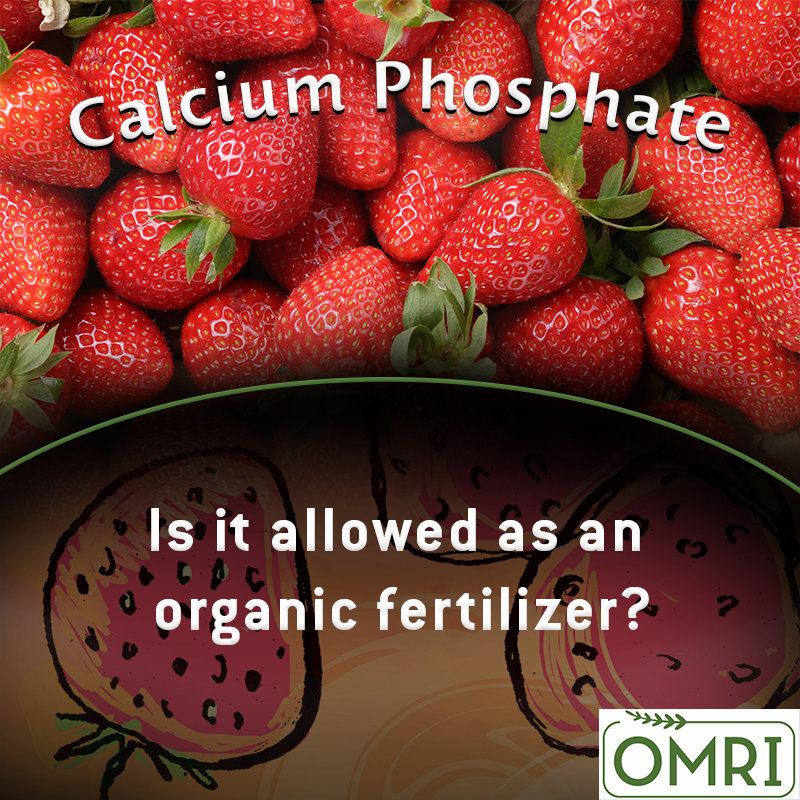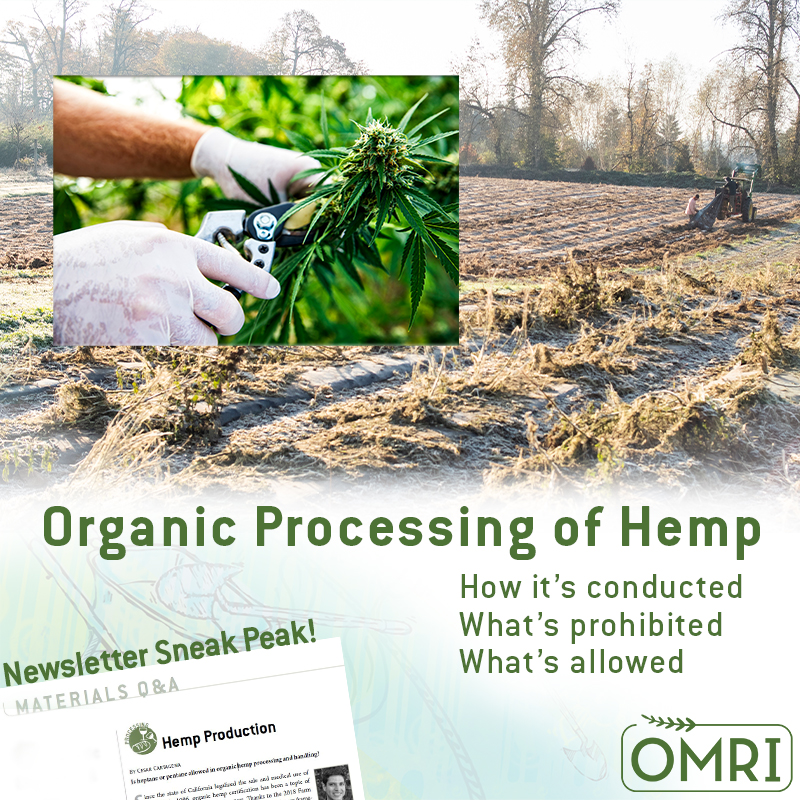
Looking for complete background information on a particular topic? You’ve come to the right place!
Browse OMRI’s articles, or contact us to suggest a topic. Don’t forget that subscribers receive the complete OMRI newsletter with the latest reports, delivered quarterly.
 Can hydrated sodium calcium aluminosilicate or silicon dioxide be used as a treatment to reduce aflatoxins in feed?
Can hydrated sodium calcium aluminosilicate or silicon dioxide be used as a treatment to reduce aflatoxins in feed?
By Brian Baker
If the material is nonsynthetic, then yes. Otherwise, no.
The use of mycotoxin binders or adsorbants in feed can reduce toxic substances produced by Aspergillus spp. and related fungi harmful to livestock. Hydrated sodium calcium aluminosilicate...
 What is the status of pelargonic acid? Can it be used as an herbicidal soap in organic production?
What is the status of pelargonic acid? Can it be used as an herbicidal soap in organic production?
By Brian Baker
Pelargonic acid, also known as nonanoic acid, occurs naturally in many animals and plants, including geranium (Pelargonium spp.). Commercially, however, pelargonic acid is manufactured using a synthetic process; to produce the active ingredient, various sources of fats...
Is polyvinyl acetate allowed as a wood treatment?
By Jacky Castañeda
The Federal Insecticide, Fungicide and Rodenticide Act (FIFRA) defines an inert ingredient in a pesticidal product as “an ingredient which is not active.” USDA National Organic Program (NOP) regulations follow this definition when considering products formulated as pesticides. While the definition is simple and any number of ingredients may be defined by this classification, limitations exist, especially when dealing with synthetic substances....
 Are all calcium phosphate fertilizers allowed in organic production?
Are all calcium phosphate fertilizers allowed in organic production?
By Brian Baker
No, calcium phosphate’s allowance in organic farming depends on its source and manufacturing. Calcium phosphate comes in mono-, di- and tricalcium forms. Tricalcium phosphate is usually natural and allowed when derived from phosphate rock or bone meal....
 Is heptane or pentane allowed in organic hemp processing and handling?
Is heptane or pentane allowed in organic hemp processing and handling?
By Cesar Cartagena
Since the state of California legalized the sale and medical use of cannabis in 1996, organic hemp certification has been a topic of particular interest to farmers and operators. Thanks to the 2018 Farm Bill, which directed the USDA to establish a national regulatory framework for hemp production,...
If a product is OMRI Listed® for use under USDA organic regulations, does that provide sufficient verification of GE status to prove compliance under the COR standards?
By Sarah Peters
The Canadian and U.S. regulations differ in regard to how they address genetic engineering (GE) in organic production. As a result, the OMRI listing of a product for compliant use under the USDA National Organic Program (NOP) regulations does not automatically equate to that same material being considered compliant under the Canadian...
How does the Canada Organic Regime (COR) standard apply to hand sanitizers?
By Jimmy Trasport
During the course of the COVID-19 pandemic, people became very familiar with hand sanitizer products. Under the Canada Organic Regime (COR) standards, there are special considerations for using such products in organic processing and handling.
Hand sanitizers most commonly use ethyl alcohol (ethanol), isopropyl alcohol or benzalkonium chloride as...
Are there non-synthetic sources of phosphoric acid? Under the Canada Organic Regime (COR) standards, what restrictions apply to phosphoric acid used as a formulant in livestock health care products?
By Cesar Cartagena
As one of the six macrominerals, phosphorus is an essential element for life. Its elemental forms, white and red phosphorous, are highly reactive, and phosphorous is most often found in nature as the insoluble rock phosphate mineral apatite.
Phosphorous is better absorbed when in soluble form, such...
Can oak wood chips or oak wood powder be used in wine labeled “made with organic grapes”?
By Whitney Frobe
Some wine producers use oak wood chips or powders to enhance the flavor of their wines, offsetting the rising costs of oak barrels, which are traditionally used to flavor wine during the aging process. Are oak chips allowed for use in wines labeled “made with organic grapes” or labeled as “organic”? If so, what review standards are used to determine the compliance of oak chips and powders?
...How do the USDA standards address GMOs?
By Peter Bungum
In 2002, the OMRI Advisory Council developed a process for addressing genetically modified organisms (GMOs) in inputs, and OMRI continues to use this process. This article, as well as articles on GMOs as Processing Inputs and GMOs as Livestock Inputs, reflect OMRI's historic and current stance on addressing GMO materials in the absence of further...








